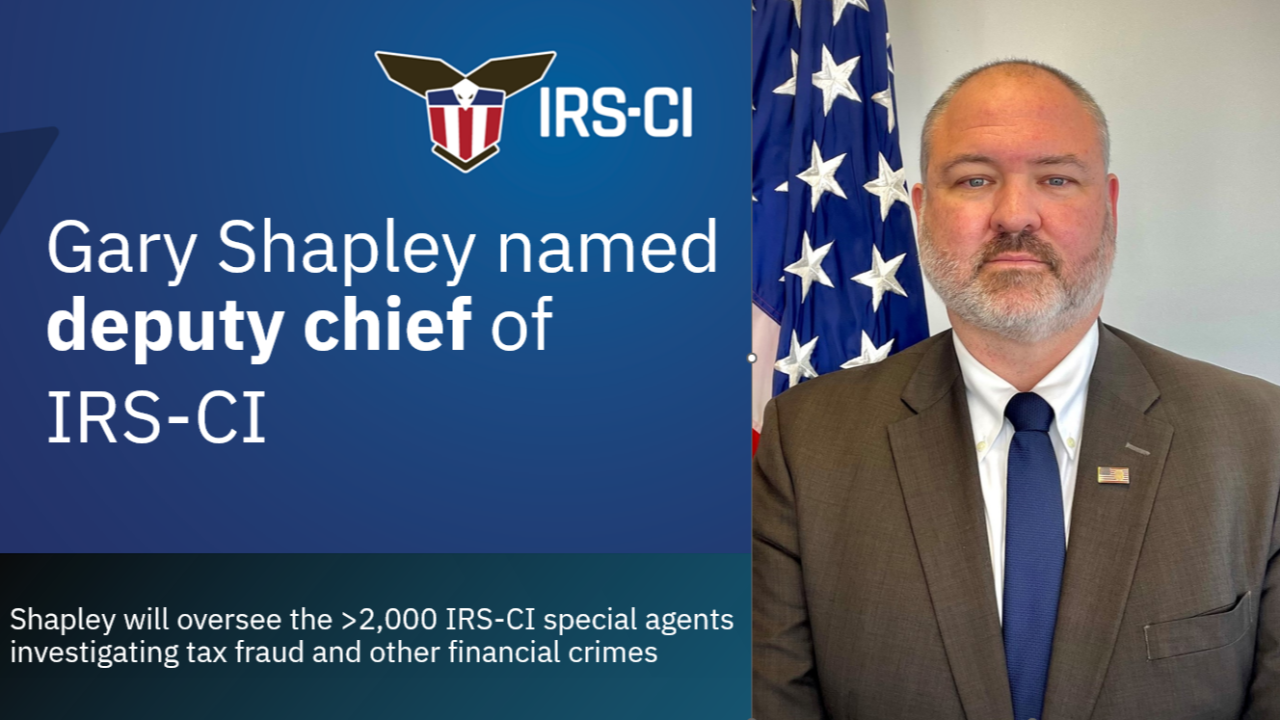The Internal Revenue Service opened the 2025 tax filing season today and is accepting and processing federal individual tax year 2024 returns.
During today’s early morning opening, IRS systems have already received millions of tax returns from across the nation for processing.
The IRS expects more than 140 million individual tax returns for tax year 2024 to be filed ahead of the Tuesday, April 15 federal deadline. More than half of all tax returns are expected to be filed this year with the help of a tax professional, and the IRS urges people to use a trusted tax pro to avoid potential scams and schemes.
Taxpayers residing in a federally declared disaster area may have additional time to file and pay federal taxes.
Get free help preparing and filing taxes electronically
Taxpayers can visit IRS.gov to get answers to tax questions. IRS.gov is the quickest way for taxpayers to get help. The Interactive Tax Assistant (ITA) is a tool that provides answers to several tax law questions specific to individual circumstances. Based on input, it can determine a taxpayer’s filing status, if a person should file a tax return, if someone can be claimed as a dependent, if a type of income is taxable, if a filer is eligible to claim a credit or if an expense can be deducted.
The IRS encourages people to file their tax returns electronically and choose direct deposit for more secure and faster refunds. According to Treasury’s Bureau of the Fiscal Service, paper refund checks are 16 times more likely to have an issue, like the check being lost, misdirected, stolen or uncashed. Filing electronically reduces tax return errors as the tax software does the calculations, flags common errors and prompts taxpayers for missing information.
Free tax filing options
The IRS offers free online and in-person tax preparation options for eligible taxpayers through IRS Free File, IRS Direct File and Volunteer Income Tax Assistance and Tax Counseling for the Elderly programs.
IRS Free File. Taxpayers with income of $84,000 or less last year can use IRS Free File Guided Tax Software now through Oct. 15. IRS Free File Fillable forms, a part of this program, is available at no cost to any income level and provides electronic forms that people fill out and e-file themselves, also at no cost.
Direct File. Now open in 25 participating states, taxpayers can use Direct File to file online directly with the IRS for free. It is a free web-based service – available in English and Spanish – that works on mobile phones, laptops, tablets or desktop computers. It guides taxpayers through a series of questions to prepare their federal tax return step-by-step. Direct File automatically guides taxpayers to state tools to complete their state taxes. Get help from IRS customer service representatives through a live chat feature in English and Spanish. Interested taxpayers can go to directfile.irs.gov, where they can determine if they are eligible.
Volunteer Income Tax Assistance (VITA). The VITA program offers free tax help to people who generally make $67,000 or less, persons with disabilities and taxpayers whose preferred language is not English. IRS-certified volunteers provide free basic income tax return preparation with electronic filing to qualified individuals.
In addition to VITA, the Tax Counseling for the Elderly (TCE) program offers free tax help for all taxpayers, particularly those who are 60 and older, specializing in questions about pensions and retirement-related issues unique to seniors.
MilTax. This is a Department of Defense program available to members of the military and some veterans with no income limit. MilTax generally offers free return preparation and electronic filing software for federal income tax returns and up to three state income tax returns.
Most refunds issued in less than 21 days: EITC refunds for many available by March 3
The easiest way to check a refund’s status is by using Where’s My Refund? on IRS.gov or the IRS2Go app.
Many factors can affect refund timing after the IRS receives a tax return. Although the IRS issues most refunds in less than 21 days, the IRS cautions taxpayers not to rely on receiving a refund by a certain date, especially when making major purchases or paying bills. Some returns may require additional review and may take longer.
Under the federal Protecting Americans from Tax Hikes (PATH) Act, the IRS cannot issue Earned Income Tax Credit (EITC) and Additional Child Tax Credit (ACTC) refunds before mid-February. Where’s My Refund? should show an updated status by February 22 for most early EITC/ACTC filers. The IRS expects most EITC/ACTC related refunds to be available in taxpayer bank accounts or on debit cards by March 3 if they chose direct deposit and there are no other issues with their tax return.
Report taxable income; don’t file before receiving key documents
People should report all taxable income on their tax return and wait to file until they receive all of their income and informational documents. Taxpayers may receive various income and information statements such as Forms 1099 from banks or other payers, unemployment compensation, dividends, pensions, annuities or retirement plan distributions. Taxpayers receiving Forms 1099-K, for payments on sale of goods and services through an online marketplace or payment app, can visit What to do with Form 1099-K to help them figure and report the correct amount of income on their tax return.
Choose a trusted tax professional
More than half of taxpayers turn to a tax professional for help filing a tax return. While most tax preparers deliver exceptional and professional service, selecting the wrong preparer can lead to financial harm.
Taxpayers should review the tips for choosing a tax preparer and learn how to avoid unethical “ghost” return preparers who don’t sign or include a valid preparer tax identification number (PTIN) on every tax return they prepare. Taxpayers can also use the IRS Directory of Federal Tax Return Preparers with Credentials and Select Qualifications to find trusted professionals. The IRS also reminds taxpayers that choosing someone affiliated with a recognized national tax association is always a good option. Tax professionals accepted into the IRS electronic filing program are authorized IRS e-file providers, qualified to prepare, transmit and process electronically filed tax returns.
Be aware of tax scams
Be aware of scammers, who can become more active during tax season. They will attempt to mislead people about tax refunds, credits and payments. They pressure people for personal, financial, employment information or money.
Watch out for:
- A big payday. If it sounds too good to be true, it probably is. Bad tax advice on social media may convince people to lie on tax forms or mislead them about credits they can claim.
- Demands or threats. Impersonators want people to pay “now or else.” They threaten arrest or deportation. They don’t let people question or appeal the amount of tax they owe.
- Odd or misspelled website links. Odd or misspelled web links can take people to harmful sites instead of IRS.gov.
Tax-related identity theft occurs when someone uses stolen personal information, including Social Security numbers, to file a tax return claiming a fraudulent refund. If a person suspects they are a victim of identity theft, they should continue to pay their taxes and file their tax return, even if they must file a paper return. Visit Identity Theft Central to find out more.
Know the signs of identity theft
Thousands of people have lost millions of dollars and their personal information to tax scams. Scammers use the regular mail, telephone and email to set up individuals, businesses, payroll and tax professionals. Check out the latest consumer alerts and read more about the most recent tax related scams identified by the IRS.
More help is now available
The IRS also provides taxpayers help in-person at Taxpayer Assistance Centers nationwide.
Some improvements taxpayers will see during the 2025 filing season are:
IRS Individual Online Account. The IRS continues to add more functionality to this important tool. Individuals can create or access their IRS Online Account at Online account for individuals. With an IRS Online Account, people can:
- View key details from their most recent tax return, such as adjusted gross income.
- Request an Identity Protection PIN.
- Get account transcripts, to include wage and income records.
- Sign tax forms like powers of attorney or tax information authorizations.
- View and edit language preferences and alternative media.
- Receive and view over 200 IRS electronic notices.
- View, make and cancel payments.
- Set up or change payment plans and check their balance.
New scam alert. To help protect taxpayers against emerging threats, there’s a new banner on the Online Account homepage that alerts taxpayers of potential scams and schemes, along with a link to their Digital Notices and Letters page to view correspondence sent to them from the IRS. The feature helps to educate taxpayers on common scams and fraudulent efforts to steal taxpayer information and provide taxpayers with more ability to validate the legitimacy of IRS communications.
Redesigned notices. The IRS successfully redesigned 284 notices in 2024, exceeding the agency’s 200 notice goal. It is important to note that 200 notices were redesigned and deployed in 2024 and an additional 84 redesigned notices are in line to be deployed in 2025. All notices will be added to Individual Online Account so taxpayers receiving a specific letter can see it.
Mobile-adaptive tax forms. Taxpayers can now access 67 forms on cell phones and tablets. The most recent forms feature “save and draft” capabilities, which allow the taxpayer to start a form, save it and return to it later. The addition of save and draft allows for future capabilities, including the ability for multiple spouses to sign a form.
Virtual assistants to help with refunds and other questions. Whether a taxpayer uses an online tool or calls the IRS, they will experience upgraded help features. During filing season 2025, the IRS will offer voicebot services to all taxpayers calling the IRS for refund information. The voicebot is available in English and Spanish and has helped thousands of callers without the need to wait for the next available representative. Taxpayers will have to authenticate their identity to gain access to their refund information by providing select information from their tax return.
Last year the IRS began using online chatbots for various functions. These chatbots use either guided help through choice buttons or an open text box for a customized question. The chatbots use natural language processing and understanding to interpret the input from the taxpayer to provide an appropriate response. To launch the chatbot, the taxpayer simply clicks on the “Chat” button in the lower right corner of the webpage. Currently taxpayers can use chatbots from eight webpages.
Source: IRS-2025-18, Jan. 27, 2025










